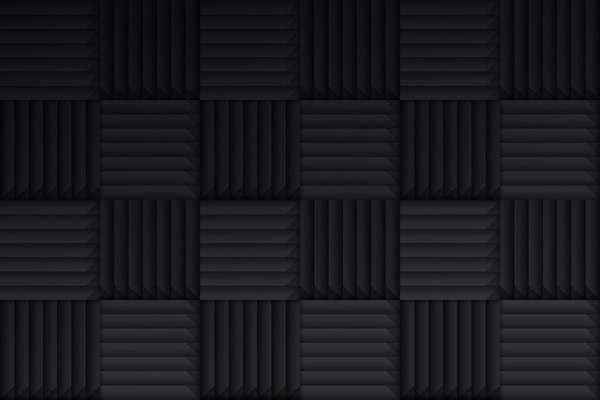AES67 at CEDIA Expo 2023
One of the hottest topics at the CEDIA Expo 2023 was Audio-over-IP, also employed in various forms such as AV-over-IP or Media-over-IP. Anthony Grimani shares his thoughts on the best solutions from the show.
We’re wrapping up a very productive CEDIA Expo 2023 in the USA. My speaker company, Grimani Systems, was involved with an award-winning demo alongside Storm Audio and Seymour Screen Excellence that showcased one of the more inclusive Audio-over-IP (AoIP) solutions, the AES67.
ADVERTISEMENT
AES67 is a standard developed by the Audio Engineering Society that carries uncompressed digital audio over an Ethernet network. A single Cat6 can support a large number of high-resolution uncompressed channels – more than enough to service even the largest Dolby, IMAX or DTS-format immersive home theatres.
There are quite a few different AoIP protocols, such as Dante, Ravenna and so on but one of the principal advantages of AES67 is that it will interface between devices or networks running different AoIP protocols.
So how does this work, basically? You get a network switch, connect it to the AV controller and amplifiers with Cat6, assign each controller output to the appropriate amplifier channel and you’re done. Well, it’s a little more complicated than that, but you get the idea…
Think about how much easier this makes everyone’s lives. Installation is so much simpler. Your install crews can work faster, with dramatically fewer opportunities for screw-ups that cost time and money to find and fix.
The signal stays digital all the way from the source to the amplifier. You don’t have to worry about analog interfaces or D/A conversion until the very last moment when the amp converts to analogue right before the power stage.
Do you want expandability? If you need to add more channels at the last minute, you don’t have to reinvent the entire rack. Just run one more Cat6 to the new amps and assign them to the new channels.
We usually stick to home theatre in this column but I’m sure you can see the application to whole-house distributed audio. The ability to interconnect devices flung around the house with the range and flexibility of a Cat6 network? I’ll leave the rest to your imagination.
OK, so there are a few things to keep in mind. Obviously, you’re going to need to bring the networking team in on this, because it is over IP. For simpler systems, you can just go with a basic general-purpose network switch. For more advanced setups, you’ll need a managed switch and some companies actually make dedicated switches for AoIP/AES67; that tells you how important this trend is!
I do recommend keeping the audio network isolated from the various data networks running elsewhere. You can run the audio on the data network, but the risk of conflicts is higher. Unfortunately, WiFi is not advisable for AoIP.
There’s also a relative lack of AV controller and amplifier products with AES67 in the consumer sector at present; however, it was encouraging to see the increased interest at the CEDIA show. Currently, AoIP is most likely to be found on high-end AV controllers that support high channel counts, but there’s some question as to which ones actually have it working. I can vouch for Storm Audio and Powersoft, as we used them at CEDIA.
I’d also recommend that you not skimp on the software or app you use to configure the channels for AES67. Some of the freeware programs out there are quite buggy and temperamental and it’s not worthwhile to struggle with one of these when a nice interface is only a few dollars. One particularly cool thing about Storm Audio is that the AES67 interface is included right in the configuration software for the AV controller product.
You may need to dip into products available on the commercial integration and professional audio side of things to fully populate your systems. For example, we used Powersoft at CEDIA. Commercial products can be used just fine in the highest-grade consumer systems. You may have to wade through a list of names that are unfamiliar at first; however, there are a lot of good resources at your fingertips. Just Google AES67. Look specifically for guides, diagrams and tutorials on how to set up a studio using AES67. Studio and large venue work is really where AES67 lives, but you can apply those principles to audio distribution for home theatre or whole house.
As many of you know, the show floor environment at a major trade show is one of the most challenging for putting together a functioning – not to mention good-sounding – demo. The CEDIA system was a 11.6.6 immersive room, which would normally require a full height rack or more gear to be carried in, unboxed, installed, set up, debugged, calibrated and then torn down again a couple of days later for load out. That’s a lot of work under stressful time constraints.
Using AES67, we were able to replace those racks of gear with one half-height rack about 9-10 RU high. All are neatly and quickly connected with AES67 using Ethernet cables and a basic TP-Link unmanaged gigabit switch. No trouble from interference or anything. Pretty amazing what technology can do, sometimes.
Chase Walton also contributed to this column.
-
ADVERTISEMENT
-
ADVERTISEMENT
-
ADVERTISEMENT
-
ADVERTISEMENT

